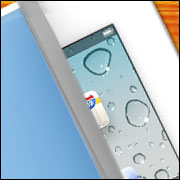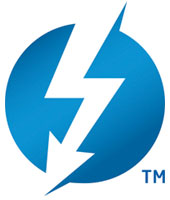
The biggest event last week was Apple’s launch of the iPad with Steve Jobs presenting it. While many seem to see the new iPad as an iterative release and not as exciting as the first one, I think it will quickly eclipse its predecessor. It is vastly more capable and moves even closer to being a full PC.
Fortune released a piece last Thursday that argues, in a well-documented fashion, that Steve Jobs basically lied to us about the iPad, implying we are all idiots. We aren’t. We are very gullible, though, and few understand what this means like Steve Jobs does.
Suddenly even Gartner analysts, after the iPad 2 launch, think that the iPad is going to displace huge numbers of PCs, even though they know markets simply don’t move that fast without a lot of help. This forecast is exactly the kind of help this move needs, and it could become a self-fulfilling prophecy if someone on the other side doesn’t work to change this perception.
You see, Apple has figured out that the only way to move into a market defined by Windows while preserving margins is to redefine what a PC is and transform it into something that favors Apple’s strengths.
The reality is that as long as you are happy, it really doesn’t matter if you are misled, and Mac fans do an impressive job of shooting down Apple heretics. Unless someone contests this, Apple could — and likely will — take even more share than Gartner predicts. This week I’ll get into how Apple is using its impressive marketing strength to redefine the future and flank Microsoft. I’ll close with my product of the week, one that Apple once again got to market first, Intel’s Thunderbolt. It even has a cool name.
Apple Vision: World Domination!
Alan Kay, coincidentally an Apple Fellow, once said that “the best way to predict the future is to invent it”, and Apple seems to have taken a page from Apple’s book on the iPod, iPhone and, particularly, the iPad.
Ever since the beginning of the PC era, customers have consistently said they wanted something that was closer to a typewriter in terms of ease of use than what we typically think of as a computer, and while Apple clearly made the attempt with the initial Mac and Microsoft with Windows, the gap between the requirement and the products was huge.
Apple is now positioning its keystone products and the company for the post-PC era, and the future they are driving is one that has an Apple product on every desk and not a Microsoft one.
To give you an idea how successful Apple has been after pounding on Microsoft for decades with what were arguably more attractive products with a marketing budget larger than any other PC vendor and execution that was unmatched — it got to around 4 percent market share worldwide. In less than a year, it got to a run rate with the iPad that comes in at better than 5 percent, and it could double that this year.
The lesson here is that it stopped trying to be a better PC and started trying to be a better something else, and its vision is starting to be our reality. The iPad 2 is vastly more capable than the iPad 1 was, and it is now moving into areas of creation — the traditional unchallenged bastion of the PC.
Microsoft’s and Google’s Problem and IBM’s Lesson
The issue isn’t technology. Regardless of the hype surrounding the iPad, it still occupies a fraction of the available market. The issue is mindshare — and this is something that Microsoft institutionally hasn’t seemed to be able to grasp since the heady days of Windows 95.
Apple isn’t redefining the market into one that wants tablets; it is redefining the market into one that specifically wants iPads, and if you recall what happened with the iPod, it has been successful at this before.
IBM, under Louis Gerstner, actually did this several times. The most memorable was when it established itself as the e-commerce leader, long before it even had an e-commerce solution, by leading with the message. Oracle lives in a world where Sun hardware is not only competitive but market-leading.
Neither world was, or is, real but these companies understand that reality doesn’t matter — only perception matters. When you control perception, you control the market. IBM kicked butt in e-commerce, and Oracle appears to be doing surprisingly well with what was a failed technology, with no apparent road map.
You often see this with engineering-driven companies. They feel they have to let the product drive the message. Marketing-driven companies let the message drive the product. Apple — and the Fortune piece I initially referenced points this out — is very creative in how it tells a story. This goes a long way toward explaining why only the iPad has truly been successful so far.
This isn’t to say that some information isn’t leaking through indicating that Apple may be vulnerable — like this piece looking at new job openings, which suggests momentum is moving from Apple to Google for developers. While Apple, if it were in its favor, would make a big deal of this, Google probably won’t, hinting that this momentum, if real, will likely reverse itself shortly — because folks will believe the exact opposite is true.
Companies that want to compete with Apple better figure out that perception and marketing matter, or they likely should focus on areas where Apple isn’t.
Wrapping Up: Politics and Technology
You may recall that long before the California elections, I predicted that both Whitman and Fiorina would lose — despite sentiment that favored their party and massive war chests that were largely unmatched — because they would fail to do what was necessary to win.
Apple is blessed with competitors that follow similar strategies. These competitors are often long on excuses and short on execution — and yes, Apple bends the truth, but unless someone calls it on that, it’s OK. Apple does what it takes to win. No matter what you think about Apple, you have to admire the fact that it plays to win.
Product of the Week: Intel Thunderbolt
 We really don’t get revolutionary technologies into the market that often, because we really don’t like change.
We really don’t get revolutionary technologies into the market that often, because we really don’t like change.
Thunderbolt is to USB and Firewire what jet fighters were to prop planes.
It is a blend of optical and electrical components that provide twice the theoretical bandwidth of the fastest USB 3.0 port, a tiny fraction of the latency, and the ability to daisy chain up to seven devices, any one of which could be a full USB 3.0 hub or HD monitor.

It makes it possible for someone to build a future iPad, for instance, with a port out capability that exceeds almost any desktop computer. You could put six monitors on an iPad; granted, I’m not sure I’d want to do that, but I could.
It is also amazing that Apple was the launch partner with Intel on this, maintaining its position as the firm that more often drives change into the PC industry. It did this with the 3.5″ drive, with the slotted drive super-drive, with getting rid of the optical drive — and now, with Thunderbolt.
For a company that really isn’t a PC company anymore, it is still having an impressive PC impact. Thunderbolt is one of the hottest new technologies for 2011, making it a natural for product of the week.






















































